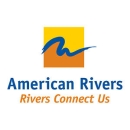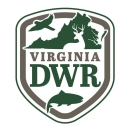The Harvell dam had blocked migration of river herring and other migratory fishes for over 70 years. There is even historical evidence of a dam structure structure
Something temporarily or permanently constructed, built, or placed; and constructed of natural or manufactured parts including, but not limited to, a building, shed, cabin, porch, bridge, walkway, stair steps, sign, landing, platform, dock, rack, fence, telecommunication device, antennae, fish cleaning table, satellite dish/mount, or well head.
Learn more about structure near the site dating back to the mid-1700s.
Together, these structures impounded the river’s flow, and blocked upstream movement of American shad, river herring, hickory shad, striped bass and American eel for centuries.
In 2014, the dam was removed and fish gained access to nearly 130 miles of great spawning and nursery habitat upstream. The project was the result of a collaborative effort between the Virginia Department of Wildlife Resources, the U.S. Fish and Wildlife Service, National Oceanic and Atmospheric Administration, American Rivers, the Harvell Dam Corporation, and the City of Petersburg, Virginia.
Since then, state biologists and local anglers continually report seeing American shad, hickory shad, American eel, river herring, and other fish species migrating throughout the river.









